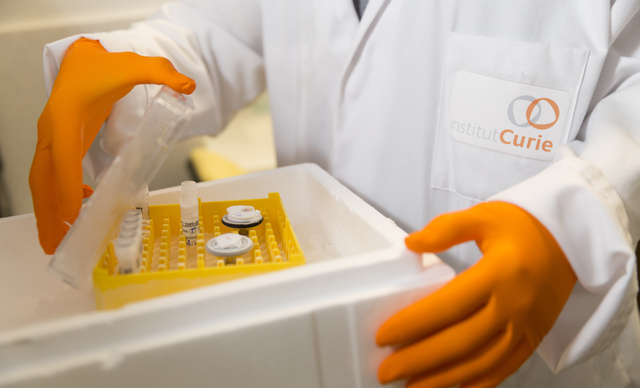Our economic model
Public funds play an essential role in the financial funding of Institut Curie, whereas private funds from public donations and bequests also ensure its independence and are a driver of innovation designed to further accelerate discoveries in order to benefit patients.

The Hospital Group's Resources
- The French health insurance fund (Assurance Maladie), as an institution of private care in the public interest, (Espic) through pricing per activity (T2A), contribution to programs of general interest, as well as contracting assistance (Migac).
- Billing treatments to patients without national health insurance, including those coming from outside the European Union, copays, and daily flat rates.
- Industrial players, benefactors, charity organizations, as well as public, semipublic, or para-public organizations for clinical research and innovation.
- Public generosity (donations and bequests).
The Research Center's Resources
- Research bodies (CNRS, Inserm, and universities): part of staff costs, operating costs, or investments costs.
- Annual subsidy from the Ministry of Higher Education, Research, and Innovation.
- Public and quasi-public funding in response to calls for bids: Agence Nationale de la Recherche (ANR), Institut National du Cancer (INCa), Îlede-France regional council, European Research Council (ERC) and European Commission.
- Private funding: benefactors, charity organizations (Ligue contre le cancer, Fondation pour la Recherche Medicale…).
- Industrial players for licenses, collaborations and partnerships.
- Public generosity (donations and bequests).
The Head Office's Resources
-
Financial assets related to Institut Curie’s cash resources. Maintaining a certain cash resource threshold enables Institut Curie to finance its support and administrative services, thereby limiting the use of public donations.
- Public generosity and CNRS finance the Musée Curie, one of the foundation’s social programs.
- Technology transfer incomes.
- Income related to international consulting business activities.
- Income related to use of the “Curie” name.
Asset Management
Intangible assets
Institut Curie holds a portfolio of trademarks and a portfolio of patents. The latter protects inventions resulting from research conducted within the Foundation. These assets are not capitalized in the balance sheet. The rights attached to the patents are granted to third parties (industrialists, biotechnology companies) through the granting of exploitation licenses.
Real estate assets
Institut Curie owns the buildings on three sites located in Paris, Orsay and Saint-Cloud, where its social missions are carried out. Additional premises are leased to accommodate tertiary activities. Institut Curie does not own any investment property.
Other fixed assets
In most cases, Institut Curie owns the assets required for its activities, including in most cases heavy healthcare equipment and research apparatus. Exceptions include, four items of radiotherapy equipment and two items of imaging equipment which are leased.
Financial assets
Comprising a portfolio of investment securities, they are intended to ensure the long-term viability of Institut Curie’s activities, while providing the resources needed to carry out its general interest missions. Their management is governed by a reference framework that was updated, following its implementation in 2018, of Institut Curie’s new statutes. In accordance with the basic principles of prudence, a wide diversification of the types of products and investment options is systematically sought. The securities portfolio is managed by the Executive Board, which has set up a financial committee to monitor investments and make recommendations. Management of medium and long-term assets is delegated to service providers selected following consultation. Cash management remains in-house. The recently initiated policy of socially responsible investment is continuing, as is the diversification into real estate through shares in non-trading real estate investment companies (SCPI). The annual report on financial management, as well as management rules and investment strategy, with an indication of the associated risks, are submitted annually to the Supervisory Board for approval.




